How to Install Turf on Patio?
Transforming your patio with artificial turf is a game-changer for homeowners seeking a lush, low-maintenance outdoor area. This guide simplifies the process, ensuring you can achieve a professional-looking finish without the complexity. Whether you’re a DIY novice or a seasoned handyperson, our step-by-step approach demystifies the installation, allowing you to enjoy a green patio year-round.
Installing turf on your patio not only elevates the aesthetics but also introduces a practical, durable surface suitable for all weather conditions. Our article dives into the essential question of “how to install turf on patio,” from selecting the ideal turf to maintaining its vibrant look. Get ready to turn your patio into a verdant retreat that beckons for relaxation and entertainment.
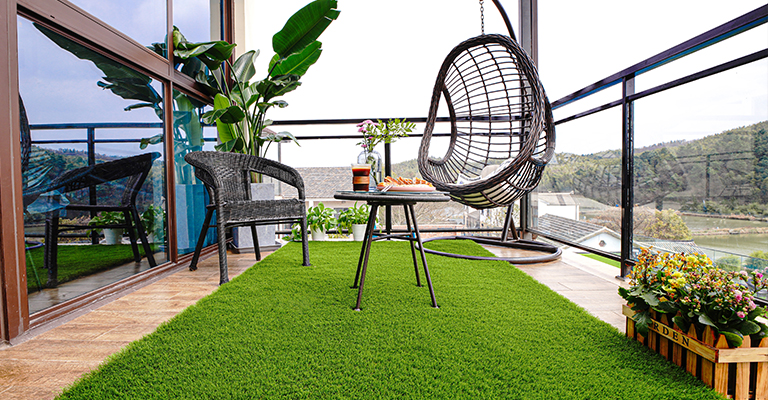
Is Installing Artificial Turf on My Patio a Good Idea?
Understanding the Benefits and Considerations
When considering a patio makeover, artificial turf is a popular choice for its aesthetic appeal and practical benefits. It’s essential to weigh the pros and cons before deciding.
Advantages of Artificial Turf
- Low Maintenance: Unlike natural grass, artificial turf doesn’t require watering, mowing, or fertilizing, saving time and resources.
- Year-Round Greenery: Turf remains vibrant and green throughout the seasons, enhancing your patio’s appearance.
- Durability: High-quality turf can withstand heavy foot traffic and adverse weather, making it a long-lasting investment.
- Water Conservation: Ideal for drought-prone areas, turf eliminates the need for regular watering.
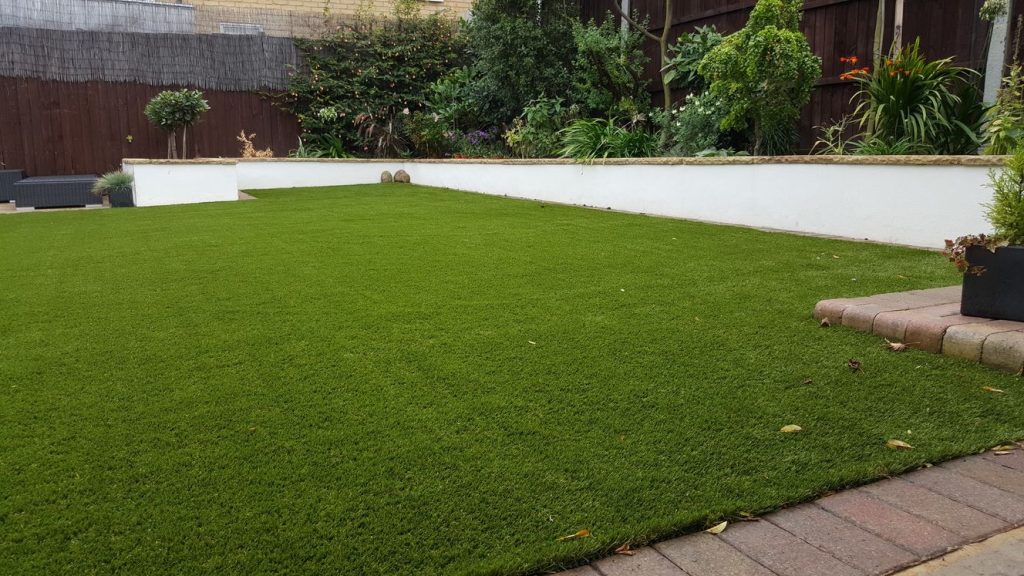
Considerations Before Installation
- Initial Cost: Quality turf comes with a higher upfront cost, though it can be offset by long-term savings on maintenance.
- Surface Preparation: The existing patio surface must be smooth and stable to ensure proper turf installation.
- Professional vs. DIY: While installing turf can be a DIY project, professional installation ensures optimal results and longevity.
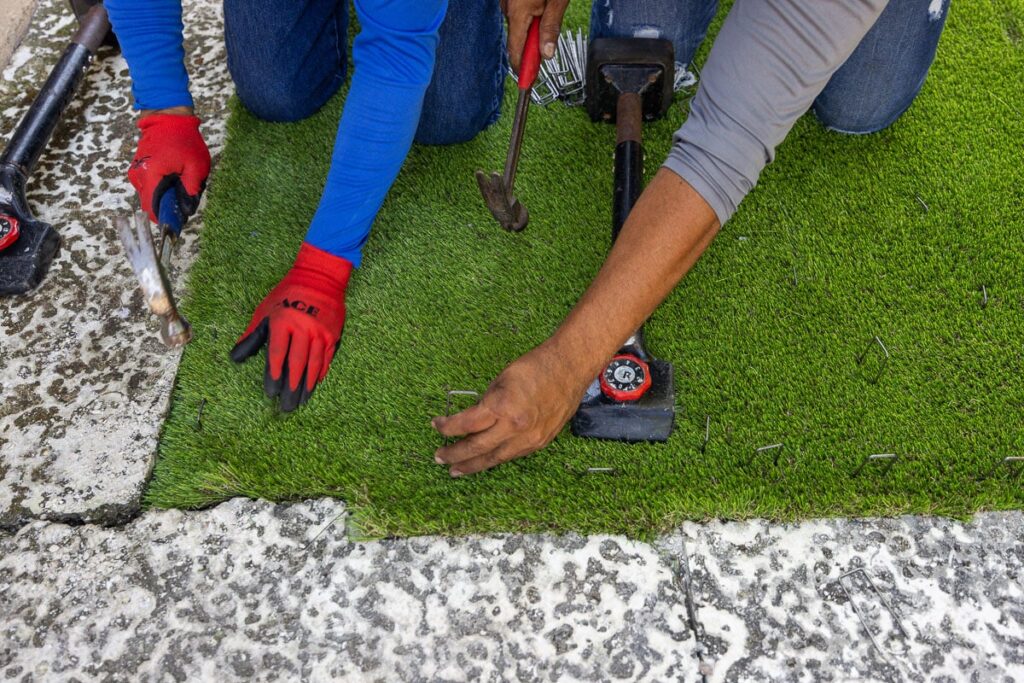
Assessing Your Patio
Before installation, assess the size, shape, and current condition of your patio. Ensure there are no significant dips or rises that could affect the turf’s appearance and functionality.
Choosing the Right Turf
Selecting the right turf involves considering pile height, density, and color. Opt for a turf that complements your patio’s theme and usage.
Environmental Impact
Artificial turf is eco-friendly as it reduces water usage. However, it’s made from synthetic materials, so consider its environmental footprint.

By understanding these factors, you can make an informed decision on whether installing turf on your patio aligns with your preferences and lifestyle.
What Are the First Steps in Preparing My Patio for Turf Installation?
Assessing Your Space and Gathering Necessary Materials
Before diving into the installation of artificial turf, it’s crucial to prepare your patio space meticulously. This preparation ensures a smooth installation process and a flawless final look.
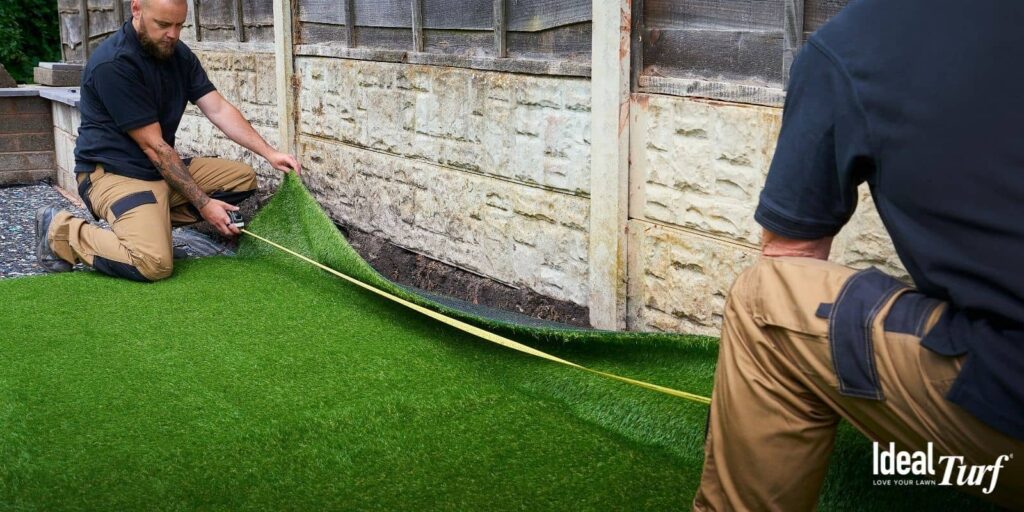
Evaluating Your Patio’s Surface
Start by clearing the patio area of any furniture, decorations, or debris. The surface should be flat and even. If you notice uneven areas, consider leveling them out with a suitable filler material.
Choosing the Right Underlay
An underlay is essential for drainage and cushioning. Select a permeable material that allows water to pass through, preventing waterlogging and ensuring the longevity of your turf.
Acquiring the Right Tools
Gather all the necessary tools before starting. You’ll need:
- A sharp utility knife for cutting the turf
- A tape measure for accurate measurements
- A hard-bristled brush to fluff up the turf fibers after installation
- Landscape staples or nails to secure the turf
- A hammer or mallet for driving in the staples or nails
- A seam roller or a heavy roller to press down the turf
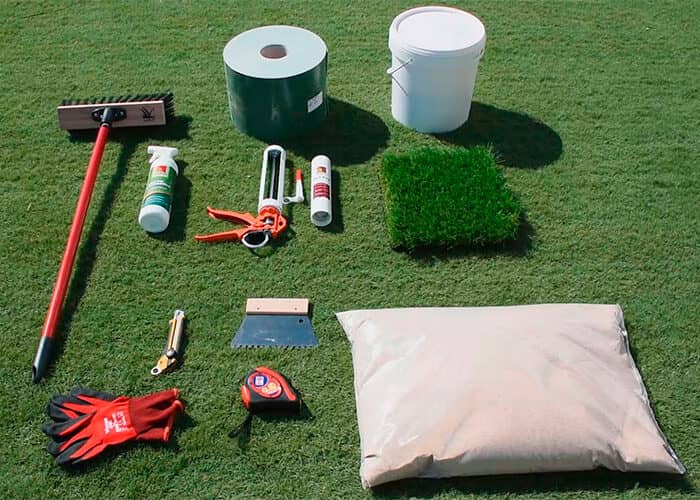
Preparing the Base
The base is the foundation of your turf installation. Remove the top layer of soil to about 3-4 inches deep. Compact the soil with a roller or tamper to create a firm base. Add a layer of crushed stone or gravel and compact it as well. This layer aids in drainage and provides a stable base for the turf.
Installing a Weed Barrier
Lay down a weed barrier cloth over the compacted base. This step is crucial to prevent weeds from growing through your new turf. Secure the barrier with landscape staples.
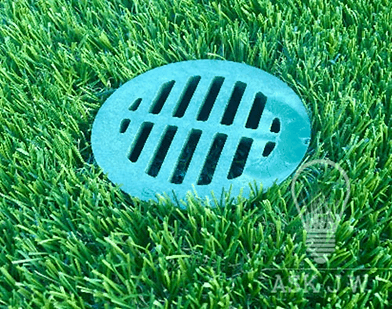
Planning for Drainage
Ensure your patio has adequate drainage to handle rainwater. If your patio doesn’t slope away from your house, you may need to install additional drainage solutions like a French drain or channel drain.
By following these steps, you’ll create a solid foundation for your artificial turf, leading to a beautiful and functional patio space.
How Do I Choose the Right Type of Turf for My Patio?
Selecting the perfect turf for your patio is a critical step that affects not just the look but also the functionality of your outdoor space. Here’s how to make the best choice:
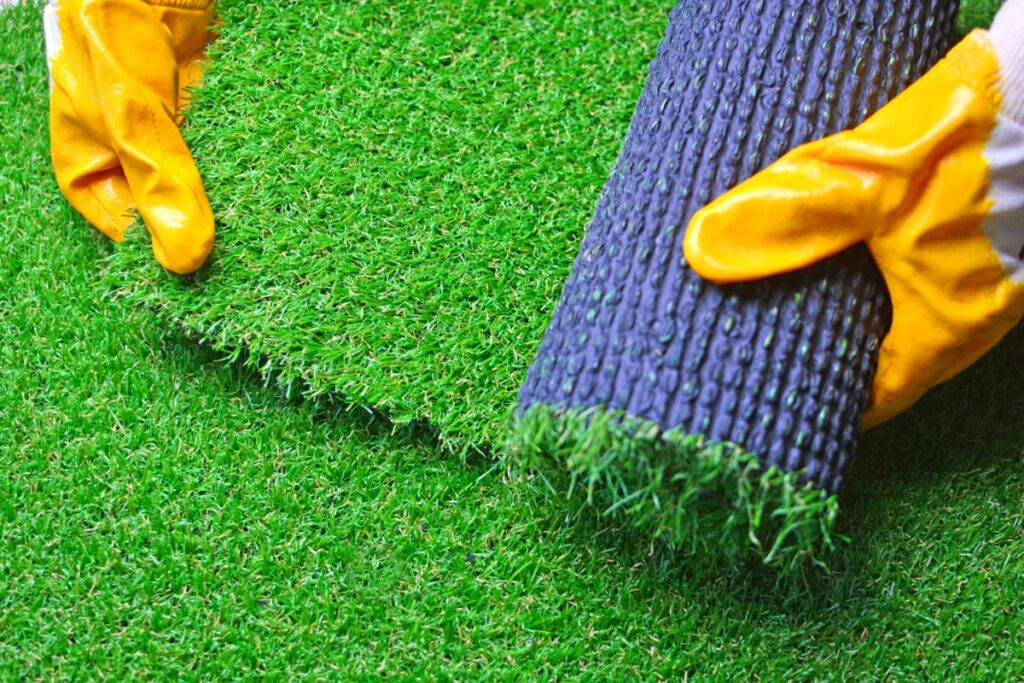
Understanding Turf Materials
Artificial turf is made from various synthetic materials, each offering different textures and durability. The most common are polyethylene, polypropylene, and nylon. Polyethylene is soft and natural-looking, making it great for patios. Polypropylene is budget-friendly but less durable, so it is suitable for light-use areas. Nylon is the most robust, handling high foot traffic with ease.
Pile Height and Density
The pile height of turf refers to the length of the grass blades. Shorter blades are easier to clean and maintain, while longer blades look more natural. A higher density means more blades per square inch, providing a fuller look and feel.
Infill Options
Infill helps keep the turf blades upright and provides additional cushioning. Options include crumb rubber, sand, or eco-friendly alternatives like cork. Consider non-absorbent infills to prevent odors, especially if pets will use the area.
Color Choices
Turf comes in various shades of green and even multicolored blades that mimic real grass. Consider the color that complements your patio’s theme and your personal preference.
Warranty and Brand Reputation
Research brands and read reviews to understand the quality and customer service they offer. A good warranty can provide peace of mind, ensuring your investment is protected.
Environmental Considerations
Some turfs are more eco-friendly, made from recycled materials, and are recyclable at the end of their life. If environmental impact is a concern, look for these options.
By considering these factors, you can choose turf that not only looks great but also meets your patio’s specific needs. Remember, the right turf can transform your patio into a comfortable, inviting space that you and your guests will enjoy for years to come.
Can I Install Artificial Turf on My Patio Myself?
A Step-by-Step Guide for DIY Enthusiasts
Installing artificial turf on your patio is a manageable project that can dramatically enhance your outdoor space. Here’s how to do it step by step:
Step 1: Measure Your Patio
Begin by measuring the length and width of your patio to determine how much turf you’ll need. It’s wise to purchase a little extra to account for any mistakes or adjustments.
Step 2: Clear the Area
Remove all patio furniture and debris. Ensure the surface is clean and smooth. If there are cracks or uneven areas, fill them in and level the surface.
Step 3: Lay the Base
Spread a layer of crushed rock or gravel over the patio, about 2-3 inches thick. This helps with drainage and creates a stable base. Compact the base thoroughly using a plate compactor.
Step 4: Install a Weed Membrane
Roll out a weed membrane over the compacted base to prevent weeds from growing through your turf. Secure the edges with landscaping staples.
Step 5: Roll Out the Turf
Carefully roll out your artificial turf over the prepared base. Let it settle for a couple of hours to remove any wrinkles or folds.
Step 6: Trim to Fit
Use a sharp utility knife to trim the edges of the turf so it fits your patio perfectly. Make sure to cut slowly and accurately to avoid mistakes.
Step 7: Secure the Turf
Anchor the turf to the base using landscaping staples or nails, placed every 6 inches along the edges and throughout the center.
Step 8: Add Infill (If Necessary)
Some turf requires infill to help the blades stand up and to add weight. Spread the infill evenly and brush the turf to work it down to the base.
Step 9: Final Adjustments
Walk over the turf or use a roller to ensure good contact with the base. Make any final adjustments to the shape or fit as needed.
Step 10: Enjoy Your New Patio
With the installation complete, you can bring back your patio furniture and enjoy the new look and feel of your outdoor space.
By following these steps, you can successfully install artificial turf on your patio, creating a beautiful, low-maintenance area for relaxation and entertainment.
Final Analysis
This is “How to install turf on Patio.” Setting on transforming your patio with artificial turf, remember that this addition is more than an aesthetic upgrade. It’s a practical choice that can enhance your outdoor living experience. Artificial turf can redefine your patio space, making it a vibrant, year-round green haven for relaxation and social gatherings. Embrace the change and the new possibilities it brings to your outdoor area.
Invest in high-quality turf that suits your lifestyle and patio usage. It may cost more upfront, but the durability and appearance will pay off in the long run. Take the time to install your turf correctly, or hire professionals if needed. Proper installation ensures longevity and maximizes the beauty and functionality of your space. While artificial turf is low-maintenance, occasional cleaning and brushing will keep it looking its best.
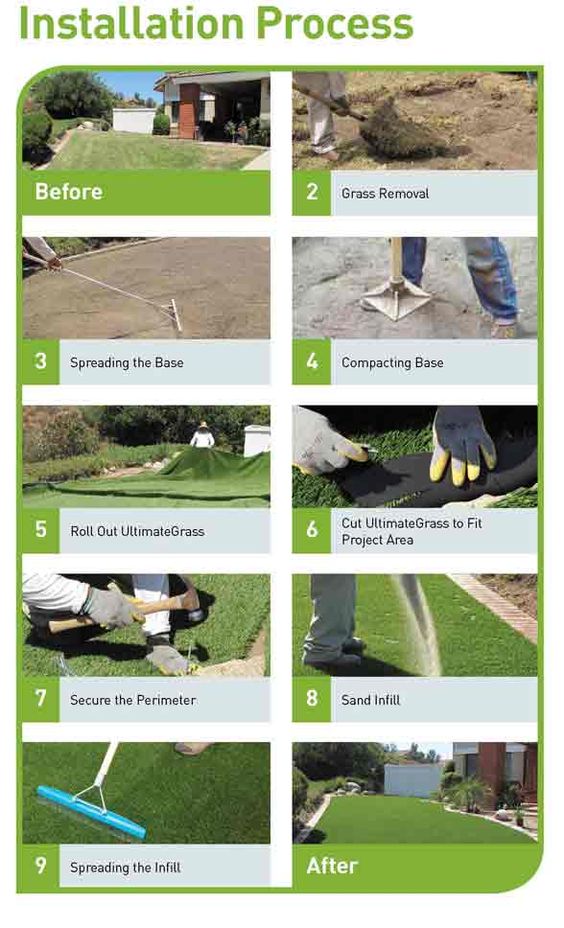
Disclosure: Our blog contains affiliate links to products. We may receive a commission for purchases made through these links. However, this does not impact our reviews and comparisons. We try our best to keep things fair and balanced, in order to help you make the best choice for you.














